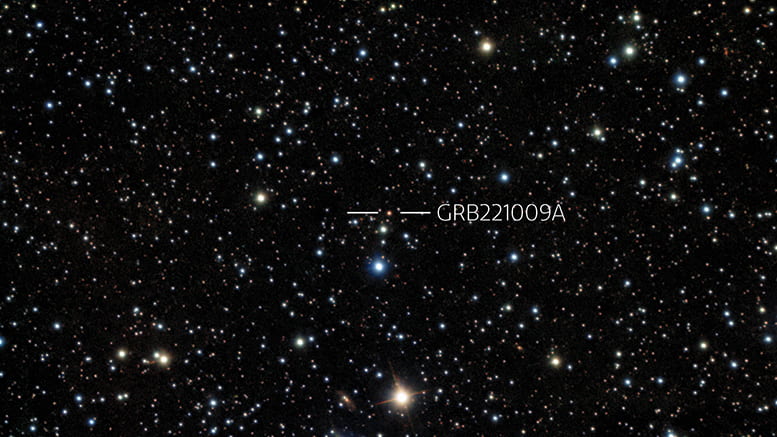Astrophysicists discover the brightest gamma-ray burst ever recorded
November 2, 2022

Last week, a team of Northwestern researchers assisted in recording the brightest gamma-ray burst ever recorded.
The discovery was part of an international effort to document an explosion nearly 2.4 billion light years away from Earth. The team of astrophysicists believes that the blast was the result of the collapse of a massive star, which generated a black hole.
“As long as we have been able to detect GRBs, there is no question that this GRB is the brightest that we have ever witnessed by a factor of 10 or more,” said Wen-fai Fong, an assistant professor of physics and astronomy in Northwestern’s Weinberg College of Arts and Sciences. “Because the GRB is so bright, we expect to be able to monitor it for several months. It’s currently in its infancy, and we are learning more with each new passing observation. Unfortunately, we only have about a month or so before it goes behind the sun. But when it comes out of solar conjunction early next year, we will be excited to see the GRB as a messy ‘toddler.’ Then, we will be ready and waiting to capture it on camera.”
Fong is also a key member of the Center for Interdisciplinary Exploration and Research in Astrophysics (CIERA). She advises Jillian Rastinejad, a Ph.D. student in CIERA who used the Gemini Multi-Object Spectrograph to help make the discovery.
Learn more in Northwestern Now’s article “Brightest-ever gamma-ray burst breaks records.”
Science & Technology

Northwestern accelerates quantum research with NVIDIA technology
September 19, 2025
NVIDIA code could help researchers tackle computationally demanding tasks hindering quantum research Northwestern University physicists are using NVIDIA technology to tackle the computationally demanding tasks hindering quantum research. Northwestern theoretical physicist Jens Koch and his research group…

CRISPR’s efficiency triples with DNA-wrapped nanoparticles
September 18, 2025
New system delivers CRISPR machinery more safely and effectively into cells With the power to rewrite the genetic code underlying countless diseases, CRISPR holds immense promise to revolutionize medicine. But until scientists can deliver its…

Passion for the planet: A new generation of environmental stewards starts here
May 29, 2025
Over the last two decades, the Weinberg College-housed Program in Environmental Policy and Culture (EPC) at Northwestern has embraced the humanities and social sciences and cultivated a new generation of environmental stewards. Growing up in…

Northwestern receives $25 million gift to advance adolescent mental health research
May 16, 2025
New institute will study psychology of emerging adults, leading to innovative wellness programming for students at the University and beyond Northwestern University is launching the Institute for Adolescent Mental Health and Well-Being, an interdisciplinary initiative…



